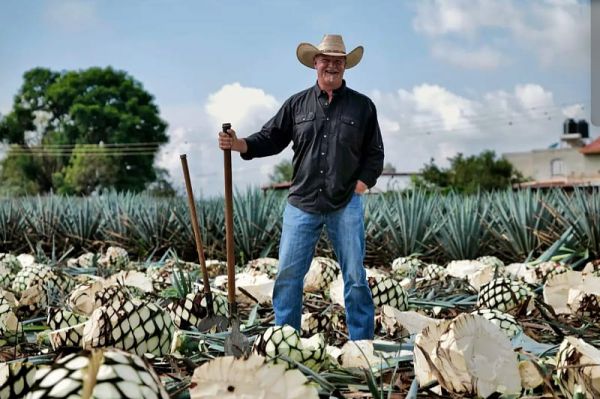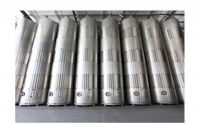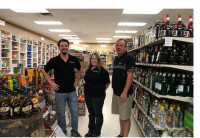Log in to your account
Lost password?Sales and Marketing
The Seven Questions Importer’s Should Always Ask
Finding new brands for your portfolio is one of the most exciting parts of the job. From exploring new regions to tasting exciting products, truly believing you have found your next big winner can instill real passion in you and your partners.
05/02/2024

Committing to mutual interests and pushing your hardest to see that vision manifest itself in the market is what the import business if all about. The process can be extremely rewarding, but as an importer each new label you chose also represents a new responsibility.
When profiling new brands, your process should go beyond your personal favorites and reflect what your distribution and retail partners also love. The decision of whether or not you take on a new brand should be made after determining how your customers will benefit.
Identifying the value of a unique selling point, determining clear price points and researching past successes and failures in the US - these are just a few of the aspects that you will need to consider as you develop partnerships with international brand owners. Even after you fall in love with a brand, every detail of the proposition must be looked at with cold and calculating eyes. Your customers are in the wine, beer and spirits business and are interested in only one thing. And that’s the bottom-line.
Here are seven questions you should always ask international brands before you take them on.
1 - What sales tools does the brand owner plan to use to gain traction in the US market?
The international brand owner should have prepared, at minimum, a Marketing Presentation of their brand that includes the following:
• Marketing
Main points of difference vs. the competition already available on the market.
• The Story
Unique place, landmarks, water, minerals, elevation, country's lifestyle, culture, tap room and any unique ingredients.
• Brand Portfolio
Sell sheets, photos and packaging of available SKU's.
• Distribution Secured
What countries, states and markets, annual sales plus excess capacity are available?
• Awards Won
A full list of domestic and international awards and competitions.
• Marketing support elements on all Media platforms
Details of POS, website, video, social media, programs, trade samples, incentives, merchandising/display enhancers, and truck decals.
• Support Programs
Outline of all U.S. sales agents, tasting groups, media agencies, brand managers, and feet-on-street available.
• Samples
Samples can be expensive if shipped from overseas, so the brand owner should have a clear understanding of the real cost of business and be prepared to send samples without any real difficulty.
2. What are the target price points for your brand?
Clear price points should already be calculated for multiple US markets (East Coast, West Coast, Midwest, etc.) The more information they can provide to you about their prospective territories will show you how prepared they really are to tackle the US industry.
Ask what they have established as an F.O.B. (in their own country) that covers the full cost of goods and provides margin for themselves. It’s good to know the business practices of your partners and you can use this info to double check their quoted estimated retail costs.
Quotes for estimated landed costs for containers into the U.S.; should include inland freight to domestic Port, Export Duties, Sea Freight to the US. Port, Import Duties, Federal Excise Taxes, Importer Fees/Margin, Inland Freight to U.S. destination, State Excise Taxes, Distributor Margin (30% normal), Sales Rep Commission and Retailer Margin (25-30% normal).
All of this data should lead the brand owner to their Recommended PTR's/PTC's for each SKU.
3 - Has the brand ever been in the U.S.? If so, where and how long ago was is sold here?
Make them be honest with you. Get them to inform you about any bad experiences or places the international brand may have failed in the U.S. You should find out (or already know) anyway. Do some research and understand the reason why they pulled out or are changing importers. It may just be the fact that the prior importer did nothing to get the brand to market.
If the brand is already sold in a state or two, it can provide a benchmark of what the market potential is for the new states the brand is entering. You can use this information to leverage new distribution partnerships. Distributors like to talk directly to other distributors about the brand, where it is selling and why.
4 - Does the brand have any success stories from their country or other export countries that would help the sell-in here in the U.S? How many cases did the brand sell last year?
The brand owner should compile industry sell-through data (IRI, Nielsen Scan track or Other Retail Tracking/Scan Data) on their brands. Not only is this good information for you to make an informed decision with, it can also be used later as a "non-biased" source with your customers. They should also provide sales data, sales per point of distribution and market share by Country, by state or retail channel to demonstrate how the international brand is successfully penetrating other markets.
You can ask them for pictures of large displays, special events and/or on-premise samplings, as these types of examples can also be an effective way of gauging their brands potential in your own market.
5 - Does the brand owner have a preference where the Importer is located--East Coast, West Coast, South, or Midwest?
The fact that the owners have been talking with other brands and importers to glean information about who and where they should be targeting is a good sign that they are really invested in coming to the USA. This can shed major light on the strengths and weaknesses of them as a potential partner. Sometimes brand owners simply want to land an importer and don’t necessarily target customers based on size, scale or niche.
Knowing that they understand your market and are indeed targeting you as an importer based on a perceived synergy is a good sign. If they understand the importance of strategically selecting an importer, then they might even understand the importance of selecting the right U.S. port.
Potentially, they could help reduce overall landed costs by sharing containers with other neighboring brands. The 20 ft vs 40 ft container cost should also be a familiar concept to the brand owner.
6 - Does the Brand Owner have any freight programs that would encourage importer/distributor participation?
Developing volume programs alongside your customers creates attractive pricing strategies for entering the competitive U.S. market.
For example, on your first order you could request eleven pallets for the price of ten. This would provide cut space for end caps and provide margin to pass along to your distributors for trade samples, incentives and in-store tastings.
Ask if they have an everyday "Container Program" where you would buy a 40 ft container, get x number of cases free. This is just another example as something that could be ongoing. The credits (free goods) can even be offered to distributors based on the number of pallets they sign up for.
There are lots of different ways programs to set up, so make sure that you and your producer sit down and discuss what will work and what won’t.
7 - Does the brand owner provide annual co-op marketing budgets/brand support for social media, in-store tastings, trade samples, sales incentives, merchandising, dealer loaders and price promotion?
Contracts should be signed by both parties to ensure this money gets spent in the proper categories and markets with the most potential. Marketing support budgets should be agreed upon, with distributor input on what works best in each major market (what works well in New York may not work well in Texas or Chicago).
Marketing budgets should be established on a per case basis or a percentage of revenue basis, so they are easily transferred market-to-market based on the agreed sales estimate. (State budgets work pretty well.)
Brew-master Dinners, Trade Shows and Major Chain Store Calls are also very important. The brand owner should be able to provide marketing dollars for these types of programs. Brand owners should also schedule yearly visits to call on important accounts and address any distribution issues that are choking growth.
Committing to mutual interests and pushing your hardest to see that vision manifest itself in the market is what the import business if all about. The process can be extremely rewarding, but as an importer each new label you chose also represents a new responsibility.
When profiling new brands, your process should go beyond your personal favorites and reflect what your distribution and retail partners also love. The decision of whether or not you take on a new brand should be made after determining how your customers will benefit.
Identifying the value of a unique selling point, determining clear price points and researching past successes and failures in the US - these are just a few of the aspects that you will need to consider as you develop partnerships with international brand owners. Even after you fall in love with a brand, every detail of the proposition must be looked at with cold and calculating eyes. Your customers are in the wine, beer and spirits business and are interested in only one thing. And that’s the bottom-line.
Here are seven questions you should always ask international brands before you take them on.
















